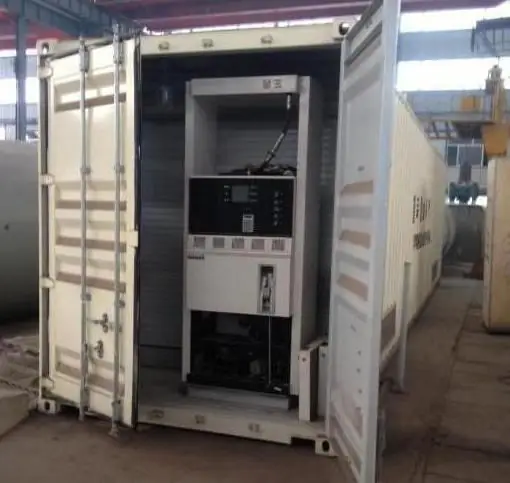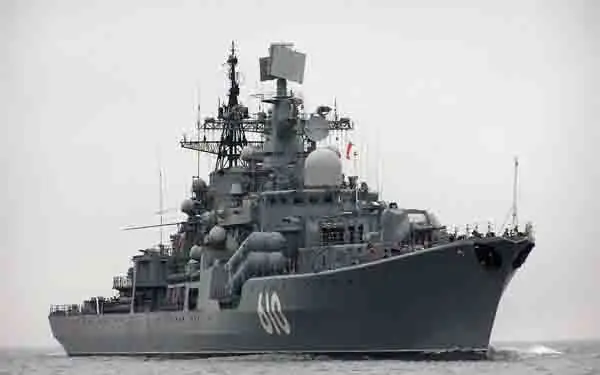2026 Author: Howard Calhoun | [email protected]. Last modified: 2025-01-24 13:10:45
Ships of project 1135 occupy a special place in the history of the Russian fleet. They differed significantly from their predecessors, were graceful, armed with advanced systems and means. They introduced all the innovative developments of that time. TFR of this project were the most popular and revered among the sailors.

Design History
Project 1135 began to be developed between 1964 and 1966. The work was managed by the Northern Design Bureau. The new ship has been assigned a wide range of missions, along with escorting convoys through difficult areas in which hostilities are taking place, solving the tasks of combating enemy submarines and providing air defense for convoys and formations of ships.
Due to the fact that the displacement should be less compared to projects 1134 (large anti-submarine ship), helicopters were not provided for on these ships. However, it was planned to equip them with modern missile systems capable of hitting not only submarines, but also surface targets.

Beginning of Project 1135 Burevestnik
As noted above, the new patrol ships, which were named Project 1135 Burevestnik, were designed at the Northern Design Bureau (TsKB-35, Leningrad). The performance characteristics of the patrol ship (abbreviated TFR) were supposed to provide air and anti-ship defense of ships and transports in the near sea zone, guaranteed to destroy enemy aircraft and cruise missiles at low altitudes. The TTZ for the development of a new series of ships was issued by the leadership of the USSR Navy in 1964.
Construction was supposed to be carried out in 3 places, namely in Kaliningrad (B altic shipbuilding plant "Yantar"), Kerch (plant "Zaliv"), Leningrad (plant "Severnaya Verf"). The number of Project 1135 ships was planned to cover the needs of all four fleets of the USSR.

Features of TFR
The project 1135 patrol ship provided a range of up to 4,000 nautical miles at a speed of 14 knots. The maximum speed was in the range of 32 knots with a displacement of 2800 tons. TFRs were equipped with modern gas turbine and power plants.
New ships were instructed to provide acceptable conditions for the crew. The project provided for the presence of double cabins for officers andmidshipmen, two sailor's canteens, a galley. For sailors in the bow and stern compartments, cabins were created to accommodate from 10 to 15 people in each.
Created ships have earned high praise from experts. TFRs perfectly rise to the wave, their flooding and spattering in all speed ranges is minimal. The use of weapons is possible without problems at any speed, including when the sea is 4 points. With the use of anti-roll devices, weapons can be used in waves of more than 5 points.
Unsinkability of the TFR was achieved by the fact that the hull of the ship is divided into 14 watertight compartments. Specialists laid down conditions so that the ship could provide buoyancy if 3 adjacent compartments or 5 non-adjacent compartments were flooded.
TFR were equipped with sufficient means of rescue: a motor boat; 6-rowed yawl; 20 emergency rafts PSN-310.
Propulsion system - two M-7K gas turbine units. The power of each is 24,000 horsepower. They were placed in pairs in adjacent engine rooms.
In addition, there was a power supply system: a gas turbine unit, consisting of a marching turbine with a capacity of 6000 horsepower; afterburner gas turbine plant with a capacity of 18,000 horsepower.
The maximum fuel supply was in the range from 450 to 550 tons. If the ship used full speed, then the fuel consumed 390 kg per mile, while the range reached 1300 miles.

Standard armament of the project1135
Typical Project 1135 patrol ship was equipped with the following weapons:
- Two twin 76mm artillery turrets. They were located at the stern. Ammunition assumed 500 shells per barrel. Their delivery was carried out from the cellar, which was located under the tower. The gun mounts were armored. Armor thickness - 5 mm. They provided a rate of fire of 40-45 shots with one barrel, which should then be cooled for 3 minutes with sea water. The barrel of the installation itself had to withstand 3000 shots until it completely failed.
- Two Osa-M short-range air defense systems. One was located in the bow of the ship, the second - in the stern. They were located in special deck cellars, where the combat set was also located (24 anti-aircraft guided missiles for each complex). Rockets were installed in 4 drums, 5 pieces in each. The reload was carried out in 20 seconds. The rate of fire of the complex is 2-2, 8 rounds per minute, depending on the type of target (air, surface). The complex detected targets at a distance of 25-30 km, while the detection height corresponded to 3.5-4 km. The minimum height at which a target was guaranteed to be hit was 60 m above sea level.
- One opposite complex URPK-4 "Metel", which was located in the bow of the TFR. The set consisted of 4 torpedo missiles. When a torpedo was launched, it separated from the rocket at a given point and carried out a parachute splashdown. Then it plunged to the depth, searching for the target of the homing system. Its depth is designed for 400 m, the speed in the searchmode 23 knots, and when aiming at a target 40 knots. Range 8 km.
- Two rocket launchers RBU-6000 "Smerch-2". They were in the bow of the ship. The ammunition was in the cellar, the barrels were loaded remotely. The range of work on the target was from 300 to 5800 m. The target was hit at a depth of 15 to 450 m. The submarine was guaranteed to be destroyed when a bomb exploded at a distance of up to 7 meters.
- Two 533 mm ChTA-53-1135 torpedo tubes. They were on the sides of the ship. The warhead of the torpedo weighed 500 kg, and the torpedo itself 2.1 tons. Her speed was in the range of 40-43 knots. Range 19 km, depth 12 m. Each torpedo launcher had 8 pieces of ammunition per vehicle.
- 16 IGDM-500 mines. To simplify the installation of mines when the ship was moving, special rails were used. The range of depths in the place of their setting was from 8 to 35 m.
Also, Project 1135 ships were equipped with jamming installations, various fire control systems, radiation stations and other necessary equipment.
The main performance characteristics implemented in the 1135 Burevestnik project: displacement of the TFR - standard 2810 tons, total 3200 tons; vessel length 123 m, width 14.2 m; autonomy of navigation - 15 days. The crew of the project 1135 in standard terms is 191 people, of which 22 officers, 27 midshipmen.

TFR construction sites
The 1135 series ships were built at three factories, namely:
- B altic shipyard"Yantar" (the city of Kaliningrad) built 8 ships in the period from 1970 to 1975.
- Zaliv Plant (Kerch city) built 7 ships from 1971 to 1981.
- The Severnaya Verf plant (the city of Leningrad) built 6 ships from 1976 to 1979.
The first of the Vigilant patrol ship series was adopted by the B altic Fleet in December 1970.
At present, all Project 1135 ships in the Russian Navy have been decommissioned. Only the Ladny TFR remains in service.

TFR for the KGB of the USSR
For the needs of the border troops of the KGB of the USSR, a separate project of the TFR was developed. The following tasks were assigned to him:
- ensuring sentinel service;
- implementation of security measures in the economic zone of the USSR;
- fight against smuggling.
The developed project in the early seventies became known as 1135.1 "Nereus". This was a further development of projects 1135 and 1135M. The differences were in the composition of the armament and the presence on the ship of a helipad and space for a helicopter.
It was supposed to make a series of 12 ships. The main zone of their application was the Pacific Ocean. The lead ship for the border troops was built at the Zaliv plant and put into operation in December 1983.
In total, under project 1135.1, the following were built: TFR "Dzerzhinsky"; TFR "Eagle"; TFR "Anadyr"; TFR "Kedrov".
Work on the border series was stopped during the collapse of the USSR. Of the three ships laid down at that time, onlySKR "Kirov". It was commissioned in April 1993 and adopted by the Ukrainian Navy. Now this ship is the flagship of the Navy of this country under the name U130 Hetman Sahaidachny.
The design of the border ships did not actually differ from the standard 1135. The main difference is the hangar and platform for the Ka-27 helicopter.
According to experts, the border ships of the 1135.1 series had very powerful weapons, which were not usually equipped with patrol ships of the coast guard. However, this could be explained by the fact that when designing border TFRs, incidents repeatedly occurred in various areas of the ocean, where fisheries were carried out in the interests of countries. As a result, some maritime nations sent warships there to protect their fishermen.
Project 1135 Patrol Ship Modifications
Ships of project 1135 in NATO were classified as Krivak, and the type was frigate.
The project has been upgraded, namely:
- project 1135 patrol ship - the basis of the project;
- 1135M - deep modernization of the project with an increase in displacement up to 3000 tons;
- 1135.1 - border guard ship;
- 1135.2 - modernized project 1135M;
- 1135.3 - modernized project 1135M with an increase in displacement up to 3150 tons.
Modern history of the project
During the period 1999-2013. under project 1135.6, 6 Talwar frigates were built for the Indian Navy.
Since 2010, in the interests of the Russian Navy, a program has been implemented to launch an updatedproject 1135.6 (1135.7). This is a deep modernization of the project 1135 patrol ship. Low visibility technologies are used in its manufacture. The tooling is carried out on a modern element base. Weapons are advanced and extremely effective systems.
Currently, Yantar Shipyard has an order for the construction of 6 ships, namely: the patrol ship Admiral Essen, Admiral Grigorovich, Admiral Makarov, Admiral Butakov, Admiral Istomin, Admiral Kornilov. The first three have been put into operation. The rest are under construction and sea trials.
From this group, the Admiral Essen patrol ship, based on the Black Sea, is known for repeatedly launching Caliber missiles against ISIS fighters in Syria during missions in the Mediterranean.

Historical facts
In November 1975, the commander of the Watchtower TFR ship V. Sablin raised the flag of the “coming communist revolution”. He actually captured the ship and made an attempt to enter Leningrad and anchor on the Neva. He put forward demands to give him the opportunity to speak live on Central Television, as he wanted to convey to the people the truth about the situation in the country. However, on November 9, the Watchtower was surrounded by border ships, impeded its movement by dropping bombs along the course, and fired at it with artillery. Sablin was arrested, taken to Moscow, tried and shot.

Another well-known case is related to the Selfless SKR. On February 12, 1988, two American ships Yorktown and Caron entered the territorial waters of the USSR near the city of Y alta (Crimea). After unsuccessful warnings about the inadmissibility of crossing the border of the USSR and demands to leave the territorial waters, the commander of the TFR "Bezzavetny" undertook two bulks on the stern of the "Yorktown", causing damage to the equipment and plating of the sides. As a result of the incident, American ships left the territorial waters of the USSR.
TFR "Zadorny" (Northern Fleet) is known for making numerous trips to the shores of America during its service until 2005. Repeatedly recognized as the best ship of the Northern Fleet.
Recommended:
Container filling station. Container type car filling station

Container filling station is a fairly new type of gas stations. KAZS is quite easy to install. Since they are carried out in compliance with fire safety standards, they are easily approved. They can also be equipped as regular filling stations, only with a smaller volume of tanks, so they can be used not only by enterprises for their own needs, but also as commercial filling stations
What is the project structure? Organizational structure of the project. Organizational structures of project management

The project structure is an important tool that allows you to divide the entire course of work into separate elements, which will greatly simplify it
What is a technology project? Development of a technological project. Example of a technological project

As part of the article, we will find out what a technological project is, and also work out the issues of its development
History of the Ignalina NPP. Establishment, plans and closure of the station

The famous Ignalina nuclear power plant was built in Lithuania during the Soviet era. It was originally supposed to use 6 power units here, each of which would have an energy capacity of 1185-1380 MW. However, the project was never implemented due to various reasons
Submarine "Dolphin": project creation, construction, purpose, assignments, design and history of the submarine

The first combat submarine "Dolphin" served as a prototype for the further development of domestic ships of this class until 1917. The building was experimental in nature and had no great combat value, but was the beginning of the development of domestic submarine shipbuilding

